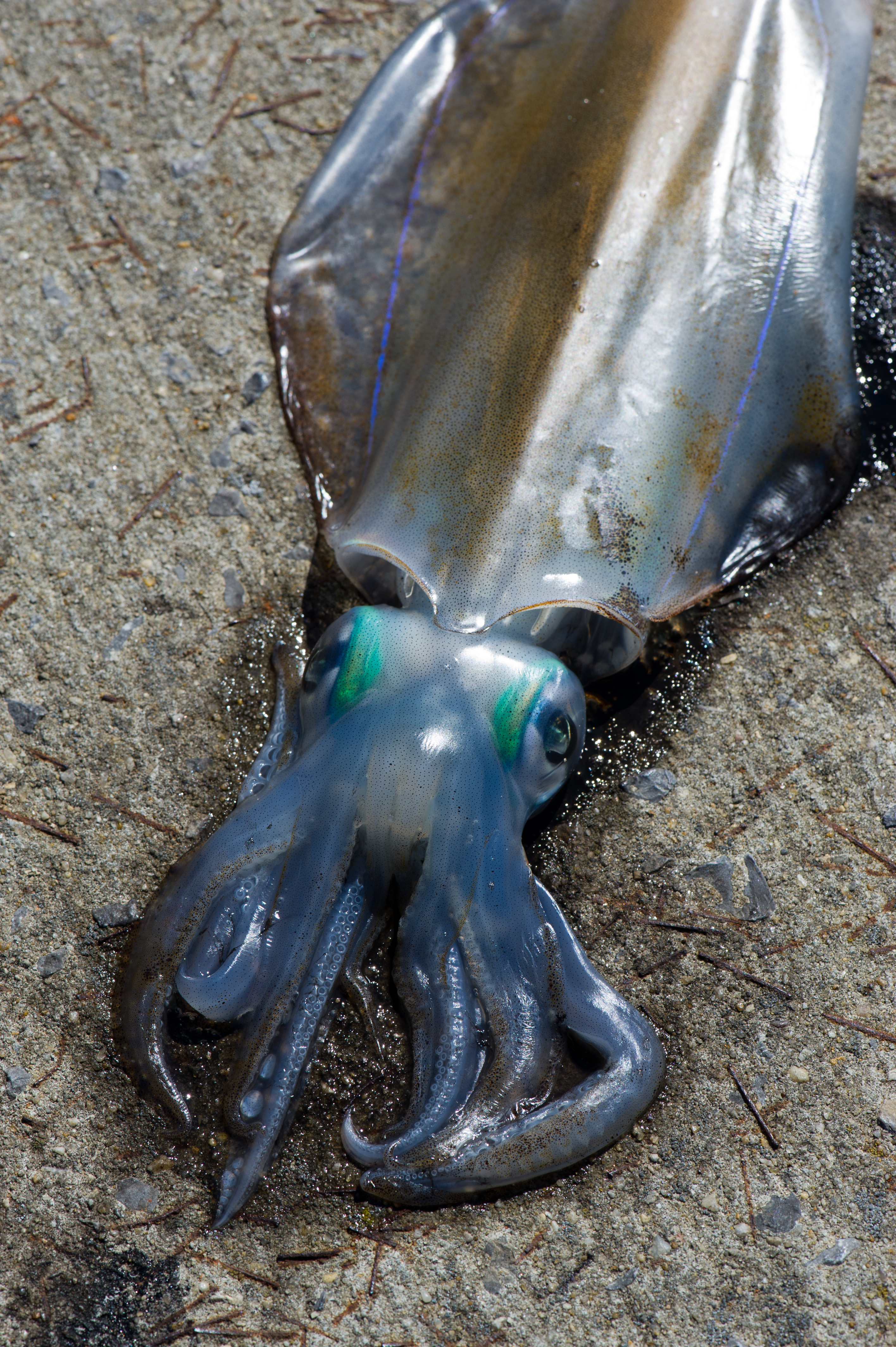Researchers are investigating new ways to assess the highly dynamic and short-lived stocks of Southern Calamari (Sepioteuthis australis) to ensure they remain sustainable.
How do you set annual catch quotas and sustainably manage a species with a one-year lifespan when relying on data that’s already two years old?
That’s the challenge facing researchers involved in an FRDC-funded project to develop a cost-efficient stock assessment program for Southern Calamari fisheries (2021-118).

Lead researcher Dr Craig Noell from the South Australian Research and Development Institute (SARDI) the research division of the Department of Primary Industries and Regions (PIRSA), says time lags are a critical challenge in the current stock assessment process.
“By the time data is collated and analysed to determine stock levels and make management decisions, Southern Calamari populations may already have advanced by up to two generations – maybe more,” Craig says.
Southern Calamari is a fast-growing and short-lived species that breeds prolifically. Variations in environmental conditions can have a significant impact on stock numbers, which are known for their boom-and-bust cycles. The species is found in South Australia, Tasmania, Victoria, NSW and Western Australia.
Gathering data
Craig says Southern Calamari has been growing in popularity with consumers in recent years, particularly in South Australia and Tasmania, where the bulk of the commercial catch is harvested. Most stocks are assessed as sustainable in the Status of Australia Fish Stocks Reports, although Tasmanian stocks are depleted or depleting.
Increasing value and pressure on stocks, and data gaps in the current assessment approach have made the need for robust stock assessments more urgent, notes Craig.
This project proposes to identify appropriate stock assessment approaches that consider the biology and environmental sensitivity of Southern Calamari.
The project is investigating how environmental factors could play a role in successful spawning or recruitment to the fishery.
“Southern Calamari is sensitive to environmental conditions. This project will help identify what some of those relationships are."
“For example, we think that clearer water in the inshore areas where Southern Calamari spawn contributes to success. We will try to establish the relationship between wind and abundance, as winds can make water turbid, depending on their direction, strength and location,” Craig says.
“Other sources of data might be available to develop a framework for more timely and robust calamari stock assessments.”
Catch per unit effort (CPUE) from commercial fisheries is already used in stock assessments, and Tasmania also conducts egg surveys to provide a pre-recruitment index. However, Craig acknowledges that more regular and reliable data about recreational fishing is needed.
South Australia and Tasmania only collect recreational fishing data every five years.
“All sources of mortality need to be identified if we’re going to establish accurate and reliable assessments,” Craig says.
Collaborations
The project was launched in March 2024 with a workshop of fisheries stakeholders in South Australia, including commercial and recreational fishers, researchers and fishery managers. Tasmania researchers are collaborating in the research, and the project team regularly communicates with relevant fisheries managers in other states.
“Involving stakeholders, particularly fishers, is important in identifying factors that influence population dynamics for further investigation, and also for potential sources of data,” Craig says.
“We are trying to develop an assessment framework flexible enough to allow new data to be incorporated, and perhaps updated as data becomes available, rather than just annually.
“In the end, everybody needs to have confidence in the framework that is developed because it underpins the management of these fisheries.”
Craig said while this project is focusing on Southern Calamari in the South Australian and Tasmanian scalefish fisheries, the aim is to develop a framework that can be adapted for calamari in other locations, and for other cephalopod fisheries.
Related FRDC Project
2021-118: Developing a cost-efficient stock assessment program for Southern Calamari fisheries





